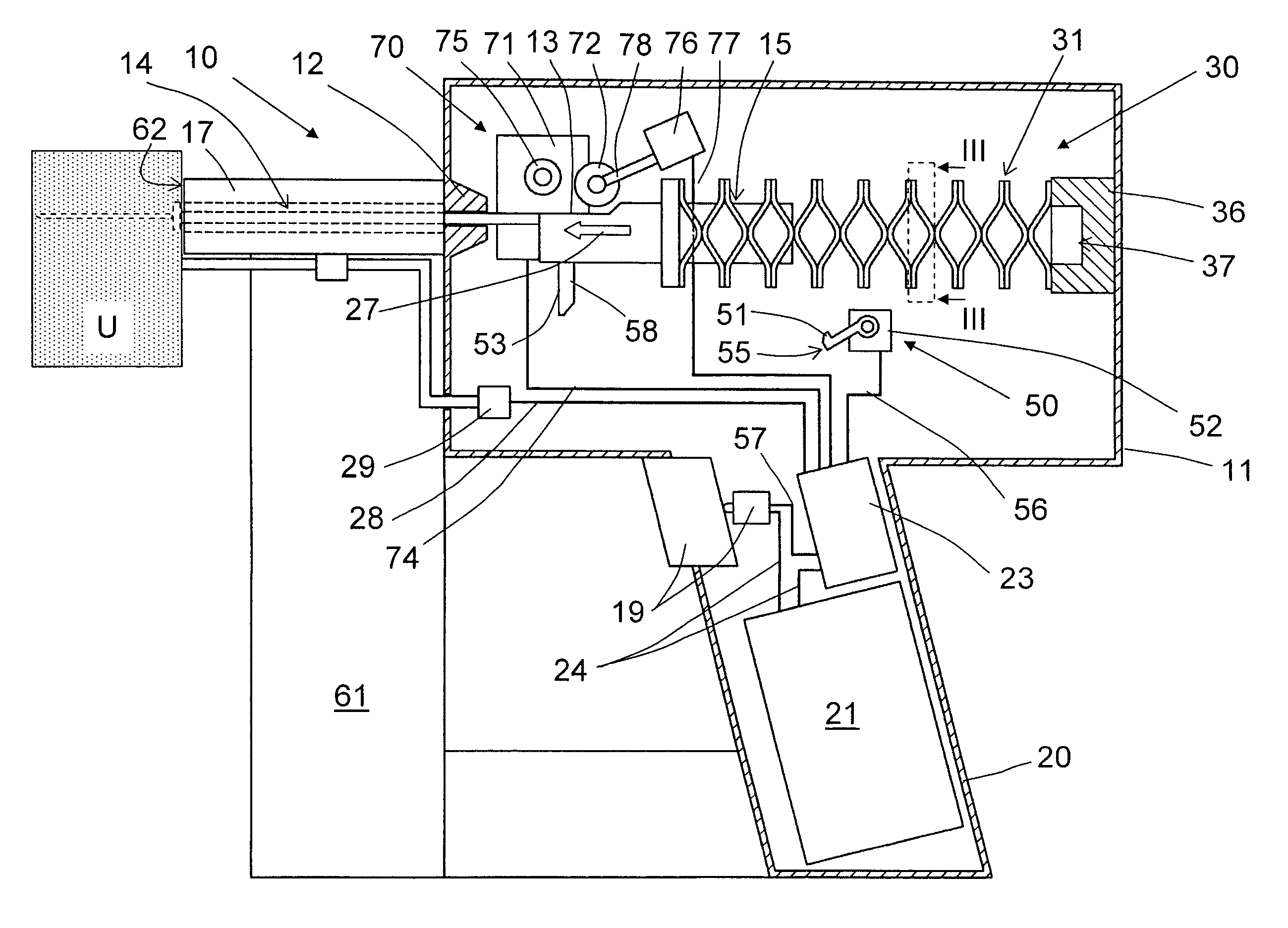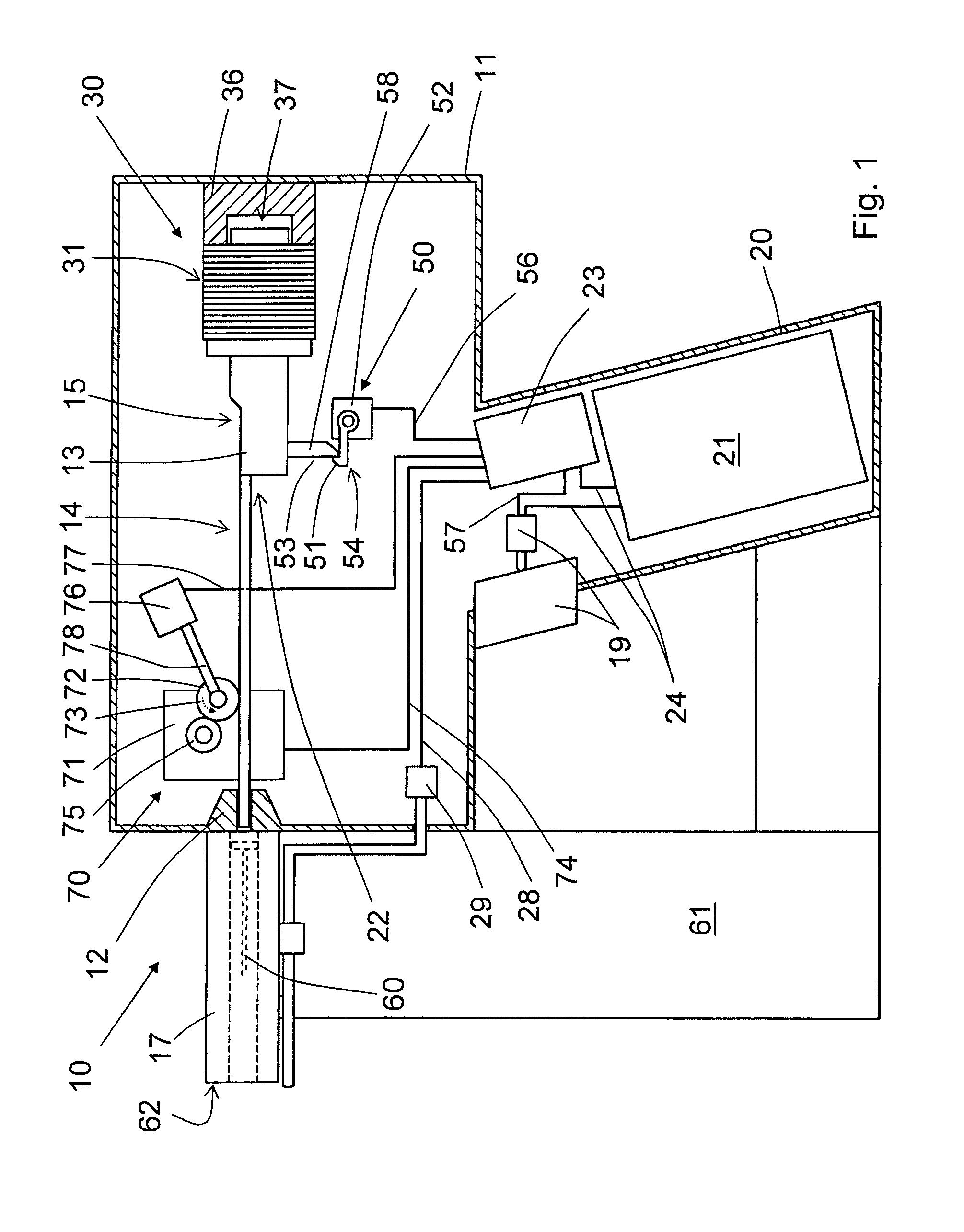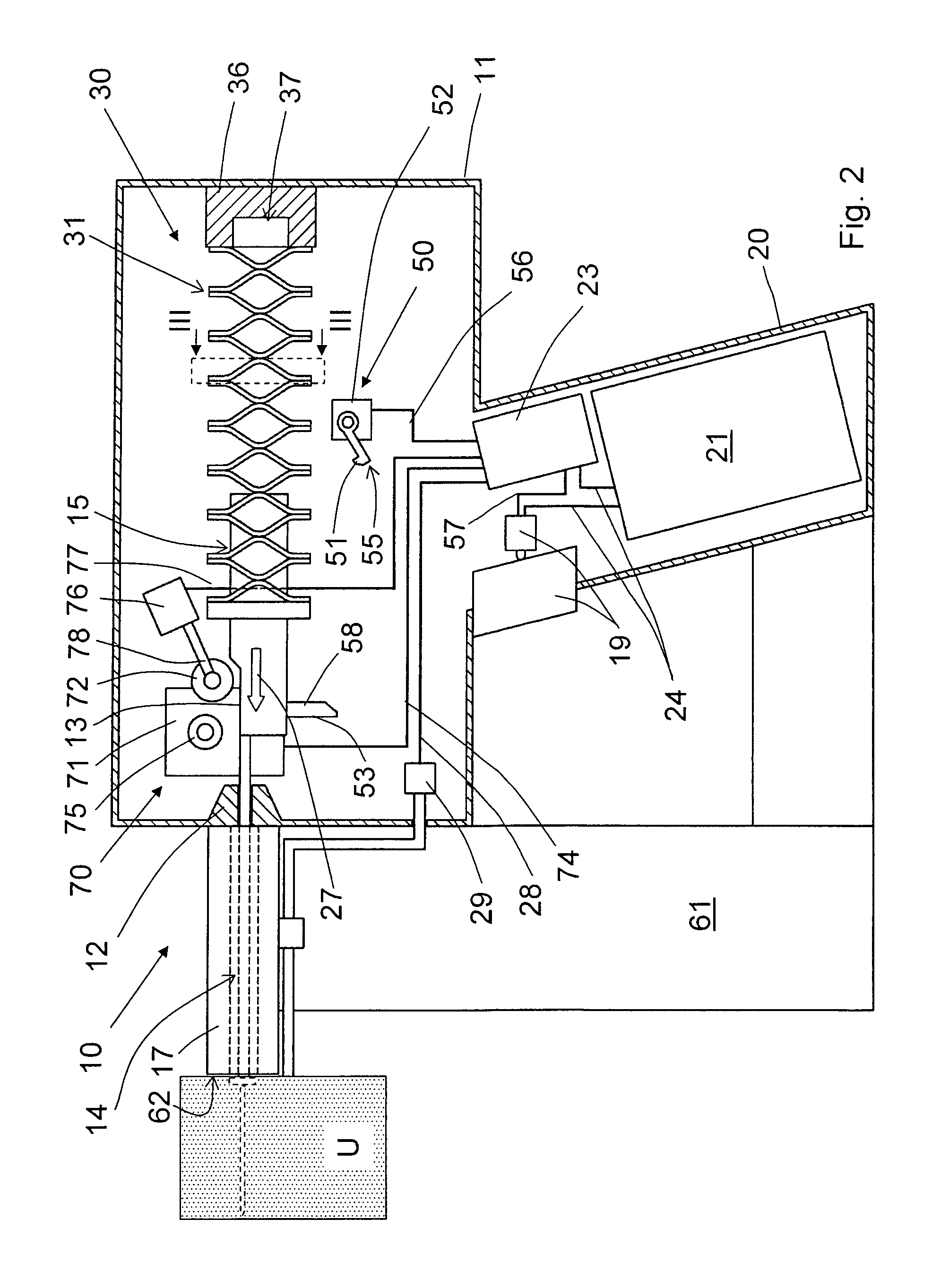Hand-held drive-in power tool
a technology of power tools and drives, applied in the field of hand-held drive-in power tools, can solve the problems of insufficient ram speed, mechanical springs lose a substantial portion of energy, and the energy can be completely lost, so as to achieve convenient and convenient production, simplify the manufacturing of separate segments, and reduce the effect of labor
- Summary
- Abstract
- Description
- Claims
- Application Information
AI Technical Summary
Benefits of technology
Problems solved by technology
Method used
Image
Examples
Embodiment Construction
[0026]A drive-in power tool 10, which is shown in FIGS. 1-2, includes a housing 11 and an arranged therein, drive 30 for driving a drive-in ram 13 displaceable in a guide 12. The drive-in ram 13 has a drive-in section 14 for driving in a fastening element 60 and a head section 15.
[0027]A bolt guide 17 adjoins the guide 12 at an end of the guide 12 lying in a drive-in direction 27. Sidewise of the bolt guide 17, projecting therefrom, there is provided a fastening element magazine 61 in which fastening elements 60 are stored.
[0028]The drive 30 includes a driving spring member 31 supported at one of its end by a support element 36 indirectly against the housing 11. The other, opposite end of the driving spring member 31 engages the head section 15 of the drive-in ram 13. As particularly shown in FIGS. 2-4, the driving spring member 31 is formed as a composite spring of a plurality of leaf-shaped rounded spring segments 32 made of a fiber-reinforced plastic material. The spring elements...
PUM
| Property | Measurement | Unit |
|---|---|---|
| setting energy | aaaaa | aaaaa |
| speed | aaaaa | aaaaa |
| drive-in speed | aaaaa | aaaaa |
Abstract
Description
Claims
Application Information
 Login to View More
Login to View More - R&D
- Intellectual Property
- Life Sciences
- Materials
- Tech Scout
- Unparalleled Data Quality
- Higher Quality Content
- 60% Fewer Hallucinations
Browse by: Latest US Patents, China's latest patents, Technical Efficacy Thesaurus, Application Domain, Technology Topic, Popular Technical Reports.
© 2025 PatSnap. All rights reserved.Legal|Privacy policy|Modern Slavery Act Transparency Statement|Sitemap|About US| Contact US: help@patsnap.com



